Introduction
Frequency accuracy and stability is of utmost importance for wireless communications. In particular at microwave frequencies.
A typical setup for amateur radio communication on 10 GHz (and above) needs a stable frequency reference. Often an Oven Controlled Xtal Oscillator (OCXO) is used. This is a precision crystal oscillator maintained at a stable temperature (typically 60°C), so that it is not impacted by ambiant temperature changes. This comes at the cost of high current drain for the heater (typically a few Watts)
An OCXO typically provides a 10 MHz reference. This frequency is very commonly used to synchronise measurement equipments in laboratories. Therefore surplus OCXO at 10 MHz are rather easy to find at affordable cost.
Another option to using an OCXO is a GPSDO (GPS Disciplined Oscillator). This device is a tunable quartz oscillator (which is obviously less precise than an OCXO) steered by a GPS clock reference.
The goal of this work is to compare both options in view of frequency stability and warm-up time. A frequency error of less than 0.1 ppm means 1 Hz @10 MHz and represent less than 1 kHz at 10 GHz. This is sufficient to tune in an SSB station.
Oscillators under test
Isotemp OCXO 134-10
Second hand device, F0 = 10.000 MHz, Stability @10 years: <4×10-7 = 4 Hz
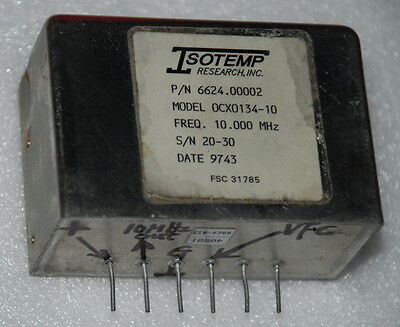
(Picture: courtesy of e-bay)
RFzero mounted as generator
Specification: Long term freq. stability 27 MHz +/-1 Hz
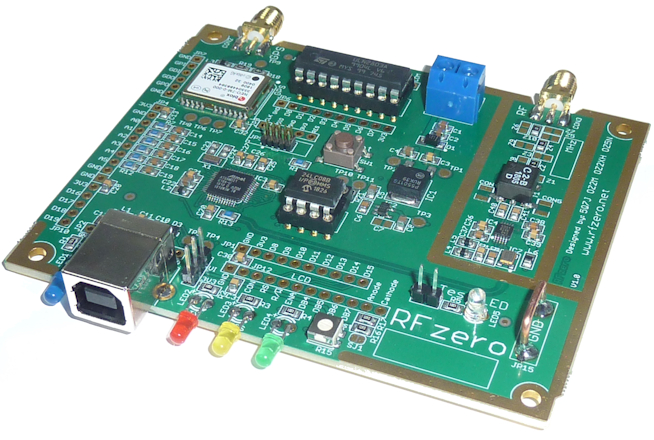
(Picture: https://rfzero.net/)
Measurement Setup
A professional Keysight universal counter 53220A equipped with option 010 (Ultra high stability) is used to measure the frequency of the oscillator under test. The counter was powered on several hours before the measurement started, to let it stabilise.
The gate time (measurement window) of the counter is set to 10s. So frequency measurements are recorded every 10s for a total duration of 96 hours (4 days) and stored for further processing.
On the picture below, the Isotemp 134-10 is in the blue box on the left, powered by a DC supply set to 13.8V. The RFzero generator is on the right. An active GPS patch antenna (not visible) was positionned near the window behind during the whole mesurement.
Each oscillator was measured independently, one after the other.
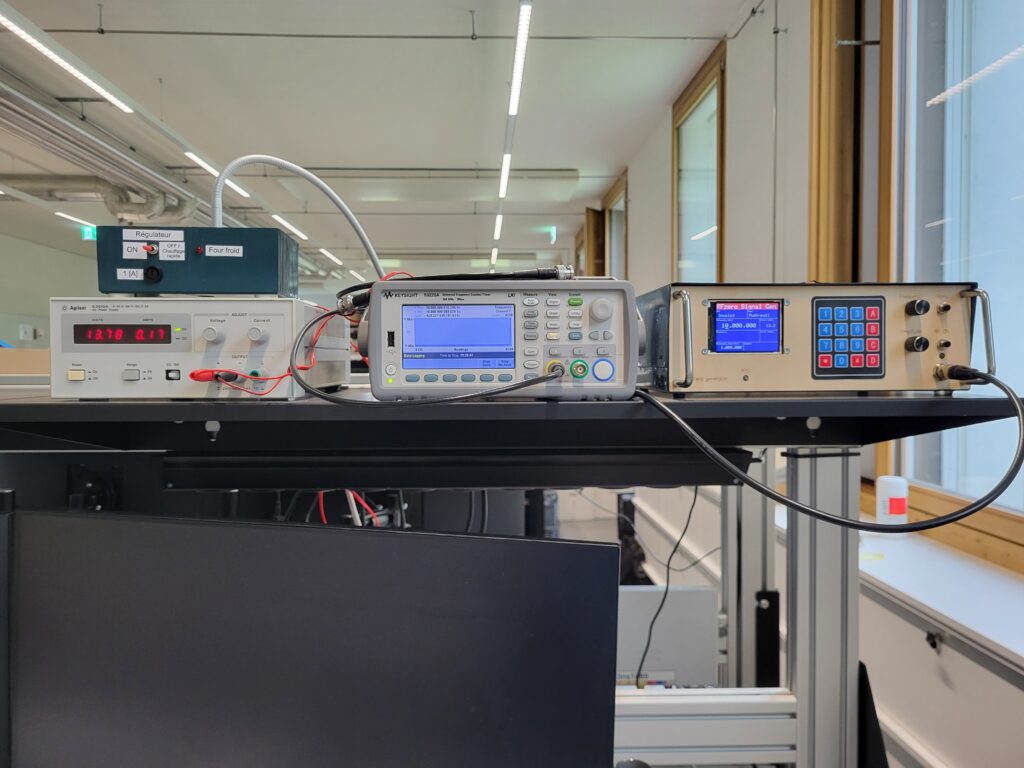
Measurement results
A number of 34560 successive measurements of the frequency were exported, post-processed using a python/matplotlib script written for that purpose. Different graphs can be extracted from the measurement data.
Isotemp 134-10
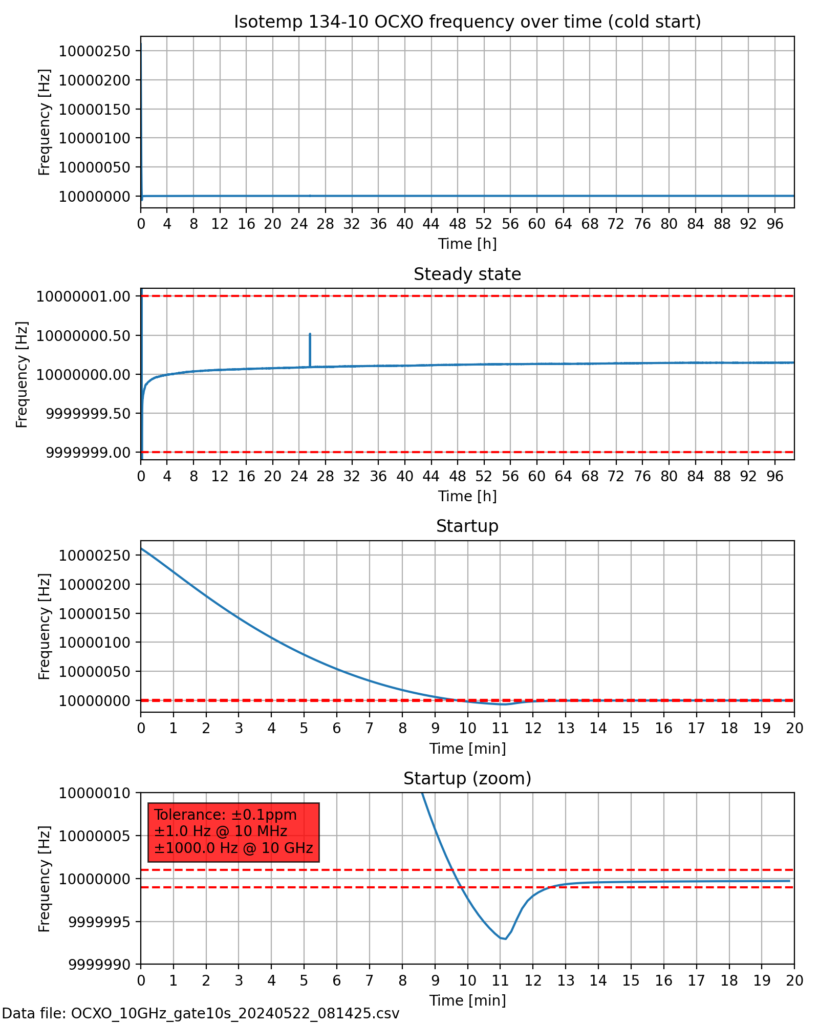
The dotted lines represent a tolerance of +-1 Hz @ 10 MHz, or +-1kHz @ 10 GHz and is the target for an easy tuning in SSB.
The Isotemp 134-10 takes about 13 minutes to reach this accuracy.
After about 26 hours, a small outlier appreared in the measurement. It may be a measurement error that should be discarded or a real frequency dip. It wasn’t investigated further.
RFzero
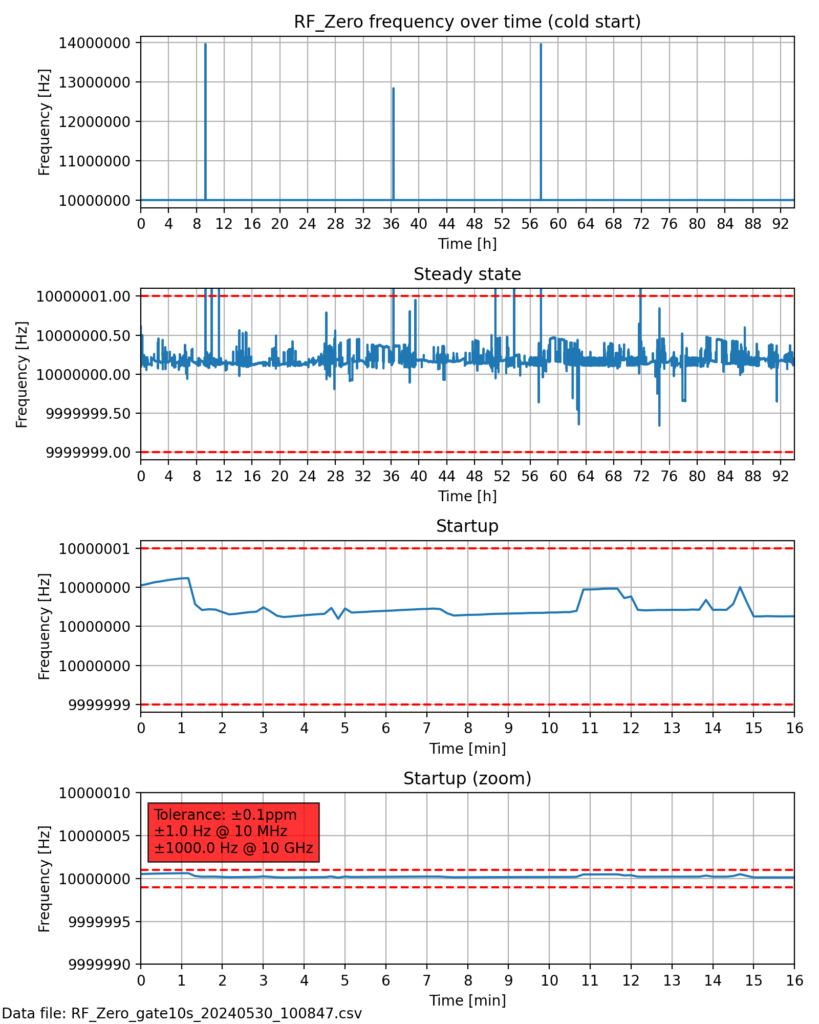
Compared to the previous measurement one can notice that the GPSDO frequency is instantaneously within tolerance (no warmup-time), even if the GPS signal was not locked in the first minutes. This indicates that the RFzero stores the frequency compensation settings in an EEPROM. If temperature didn’t changed much since the last measurement, then accuracy is already good at power on.
It is noticeable that the curve of the GPSDO is more « noisy » than the curve of the OCXO. There are several measurements that are outside the +-0.1 ppm limit, three of them beeing really far off. As these outliers are much more numerous than the single one sawn on the OCXO measurement, they are probably inherently generated by the RFzero and not measurements artefacts.
Conclusions
Both oscillators provide a frequency accuracy that is sufficient to drive an SSB radio station operating at 10 GHz. The OCXO needs a rather long warmup-time (>13 minutes) to reach the expected accuracy. The RFzero GPSDO is much faster. With respect to short term frequency stability, once the warmup period is over, the OCXO is much smoother. A smart combination of both solutions would bring best of both worlds in case fast startup as well as good short and long term stabilities are needed.